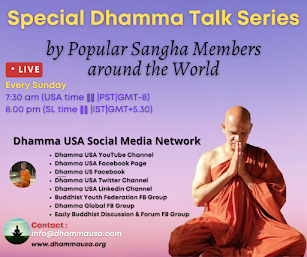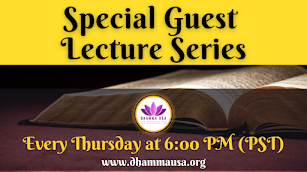Exploring the Buddhist Perspective on Gender
By Dr. Nivitigala Sumitta Thero (Bhante Sumitta)
Buddhism offers a rich and nuanced perspective on gender, grounded in its foundational teachings and shaped by its diverse cultural and historical contexts. Central to the Buddhist view is the doctrine of non-self (anatta), which challenges fixed notions of identity, including gender. This essay explores the Buddhist perspective on gender, examining how key teachings address the concept of gender, the historical treatment of gender within various Buddhist traditions, and the implications for contemporary discussions on gender diversity.
The Doctrine of Non-Self and Gender Identity
At the heart of Buddhist philosophy is the doctrine of non-self, which posits that there is no permanent, unchanging self or essence within individuals. According to this teaching, all phenomena, including the self, are impermanent and interdependent. This principle applies to gender identity as well.
From a Buddhist perspective, gender, like all aspects of identity, is considered a construct of the mind rather than an intrinsic, unchanging reality. The Buddha's teaching on non-self suggests that gender categories are fluid and contingent, reflecting the impermanent nature of all phenomena. This view encourages practitioners to transcend rigid gender identities and understand them as temporary and mutable aspects of the self.
Historical and Cultural Variations
The application and interpretation of gender concepts within Buddhism have varied significantly across different cultures and historical periods. Early Buddhist texts, primarily written in the context of ancient Indian society, reflect the gender norms and prejudices of that time. For example, the Vinaya Piṭaka, the monastic code, includes provisions that have been interpreted in ways that exclude certain gender-nonconforming individuals from ordination.
In the early Buddhist context, terms like paṇḍaka (often translated as "eunuch" or "hermaphrodite") and ubhatobyañjanaka (referring to individuals with both male and female characteristics) are used in ways that have historically been interpreted as exclusionary. These interpretations have been challenged by modern scholars who argue that such terms have been misunderstood and misapplied, reflecting broader societal biases rather than the core teachings of Buddhism.
Gender Diversity in Buddhist Traditions
Despite historical exclusions, some Buddhist traditions and modern interpretations offer more inclusive views on gender. In certain Tibetan and Zen traditions, for example, there is greater flexibility regarding gender roles and identities. Tibetan Buddhism, with its rich tapestry of deities and spiritual figures who embody both masculine and feminine qualities, often reflects a more fluid understanding of gender.
Zen Buddhism, influenced by its own historical and cultural context, has also shown varying degrees of acceptance toward gender diversity. Zen practice emphasizes direct experience and personal insight, which can accommodate a broader understanding of gender beyond binary categories.
Contemporary Discussions and Challenges
In recent decades, there has been a growing awareness of gender diversity within Buddhist communities worldwide. Modern practitioners and scholars have increasingly challenged traditional interpretations that exclude gender-nonconforming individuals from Buddhist practice and ordination. This shift reflects a broader trend toward inclusivity and the recognition of gender as a spectrum rather than a fixed binary.
Contemporary Buddhist leaders and scholars advocate for a re-examination of traditional texts and practices to align with the principles of compassion and non-discrimination. This includes addressing the historical misinterpretations of terms like paṇḍaka and ubhatobyañjanaka and recognizing the intrinsic dignity and worth of all individuals, regardless of gender identity.
Conclusion
The Buddhist perspective on gender is deeply intertwined with the broader teachings of non-self and impermanence. While historical and cultural variations have influenced how gender is understood and practiced within Buddhism, there is a growing movement toward inclusivity and recognition of gender diversity. By embracing the core Buddhist principles of compassion and wisdom, and by re-evaluating traditional interpretations in light of contemporary understanding, Buddhism can foster a more inclusive and supportive environment for practitioners of all gender identities.
References
• Bodhi, Bhikkhu. In the Buddha’s Words: An Anthology of Discourses from the Pali Canon. Boston: Wisdom Publications, 2005.
• Gethin, Rupert. Foundations of Buddhism. Oxford: Oxford University Press, 1998.
• Karunadasa, Y. Early Buddhist Teachings. Colombo: Buddhist Publication Society, 2006.
• McMahan, David L. The Making of Buddhist Modernism. Oxford: Oxford University Press, 2008.
• Robinson, Richard H., and Willard L. Johnson. The Buddhist Religion: A Historical Introduction. Belmont: Wadsworth Publishing, 1997.
• Williams, Paul. Buddhist Thought: A Complete Introduction to the Indian Tradition. London: Routledge, 2000.






























0 comments:
Post a Comment
Your comments and feedback are very helpful to us in improving our posts. We really appreciate your time. Thank you!
Dhamma USA Team.